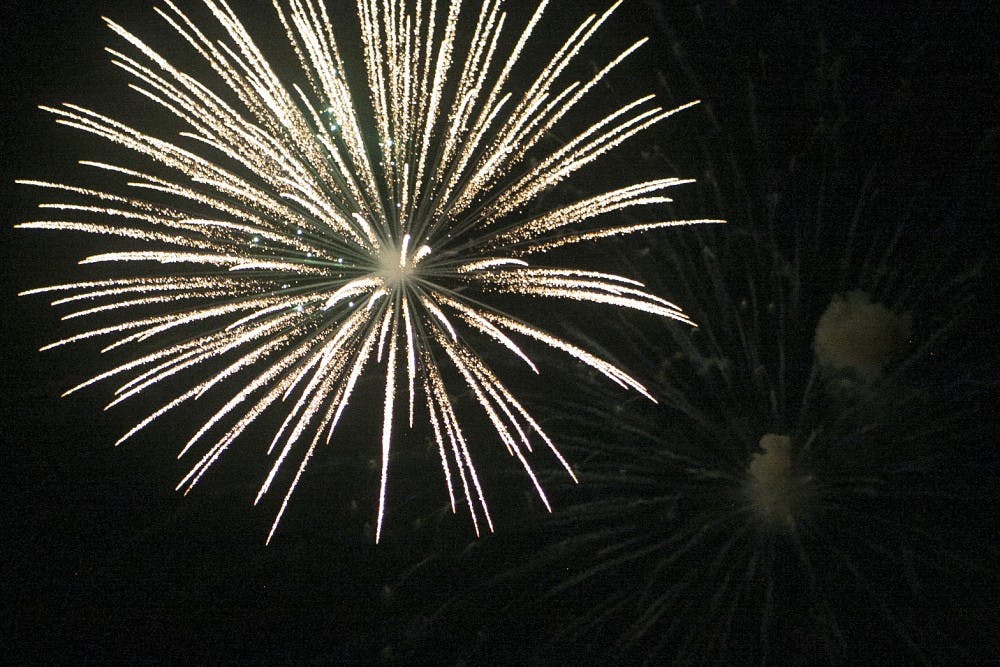HOURS
Statewide each year
9 a.m.-11 p.m. on most days
9 a.m.-midnight on Memorial Day, Fourth of July, Labor Day and New Years Eve
5 p.m. to two hours after sunset June 29-July 3, July 5-9
VIOLATIONS
The maximum fine is $500 for using fireworks on a property that isn’t theirs, someone else’s with permission or a special discharge location.
A person could face six months to three years in prison with a maximum fine of $10,000 for recklessly, knowingly or intentionally using fireworks to harm someone. For bodily injury, this is a Class D felony and for a death, it becomes a Class C felony.
A year in prison and a fine of $5,000 is the maximum for recklessly, knowingly or intentionally using fireworks to cause damage to someone’s property, which would be a Class A misdemeanor.
If a minor is using or possessing fireworks without adult supervision, it is a Class C infraction.
While the Fourth of July is a celebration, state officials and a Muncie lawyer are warning Hoosiers about the safety of fireworks.
“People lose sight of the fact that they are small explosive devices,” said John Stevens, a fireworks lawyer at the offices of John H. Brooke P.C. in Muncie. “When they operate 100 percent the way they are supposed to, they explode.”
In 2013, U.S. hospital emergency departments treated an estimated 11,400 injuries related to fireworks, according to the U.S. Consumer Product Safety Commission, which regulates fireworks products. The majority of those accidents took place during or around the holiday.
Stevens’ firm works with firework retailers, manufacturers and wholesalers, primarily in insurance cases. He said most fireworks accidents can be attributed to negligence.
“Very, very few consumer products are a true defect,” he said. “Almost inevitably, there is something else involved. Maybe they weren’t far enough away, maybe they didn’t know what they were using.”
Stevens said 60 percent of the accidents his firm has seen involve alcohol.
He recalled one incident a few years ago where several individuals loaded an old refrigerator with fireworks and then shot at it with high-powered rifles, leading to a serious injury.
Although Stevens attributed the vast majority of injuries to user error, he said firework production isn’t a perfect science. This is because many fireworks are handmade but mass-produced, sometimes with manufacturing errors.
“For as advanced as they are, the majority are still handmade individually and put together by hand,” he said. “People, primarily in China, are sifting and mixing the chemicals, they are rolling the tubes, they are packing the composition into each individual tube.”
Injuries to hands and fingers are the most common, followed by the head, face and ear, according to CPSC. About 62 percent injuries in 2013 involved burns.
The CPSC said 40 percent of the recorded injuries involved children younger than 15. In Indiana, a person has to be 18 or older to buy fireworks. The law requires that children be accompanied by an adult if they use fireworks. If an adult is not present, using or possessing fireworks is a Class C infraction for the minor.
In a statement, Indiana State Police reminded Hoosiers that the use of fireworks in the state are restricted to the hours of 9 a.m. to 11 p.m. for most days except on Memorial Day, Fourth of July, Labor Day and New Years Eve. On those holidays, the times are from 9 a.m. until midnight.
A person who violates this law can be charged with a Class C infraction. If a person recklessly, knowingly or intentionally uses fireworks and the violation causes property damage, they can be charged with a Class A misdemeanor. If there is bodily injury, it would be considered a Class D felony, which would move up to a Class C felony if it caused a death.
Despite regulations, Indiana is what Stevens calls an “open state.” If the firework is a legal consumer item, Hoosiers are free to use it in their holiday celebrations.
In 2006, Indiana loosened its fireworks laws to allow Hoosiers to use fireworks from 5 p.m. until two hours after sunset June 29 to July 3 and July 5 until July 9, regardless of any local burn bans. The state also added a public safety tax for 5 percent on sales, which has gained the state about $2.5 million in revenue each year since then, according to the Indiana Department of Revenue.
The U.S. Consumer Product Safety Commission records injuries, deaths and enforcement activities related to fireworks each year. See if you can guess the conclusions of its 2013 Fireworks Annual Report.
1. How many estimated fireworks-related injuries did U.S. hospital emergency departments see?
A) 600 B) 64,000 C) 17,000 D) 11,400
2. What were the most common fireworks to cause injuries at 31 percent?
A) Roman candles B) Sparklers C) Small firecrackers D) Bottle rockets
3. What were the most common types of injuries caused by fireworks with 62 percent?
A) Burns B) Fractures and sprains C) Contusions and lacerations D) Other
4. What is the most common injured body part at 36 percent of injuries?
A) Arms B) Legs C) Hands and fingers D) Eyes E) Head, face, ears F) Other
5. What gender was more likely to have a fireworks-related injury?
A) Male B) Female
6. What age group saw the majority, 33 percent, of these injuries?
A) 0-4 B) 5-9 C) 10-14 D) 15-19 E) 20-24 F) 25-44 G) 45-65 H) 65+
ANSWERS:
1. D, 2. B, with 2,300 estimated injuries, 3. A, 4. C, 5. A, with 57 percent, 6. F, followed by ages 0-4 with 14 percent





